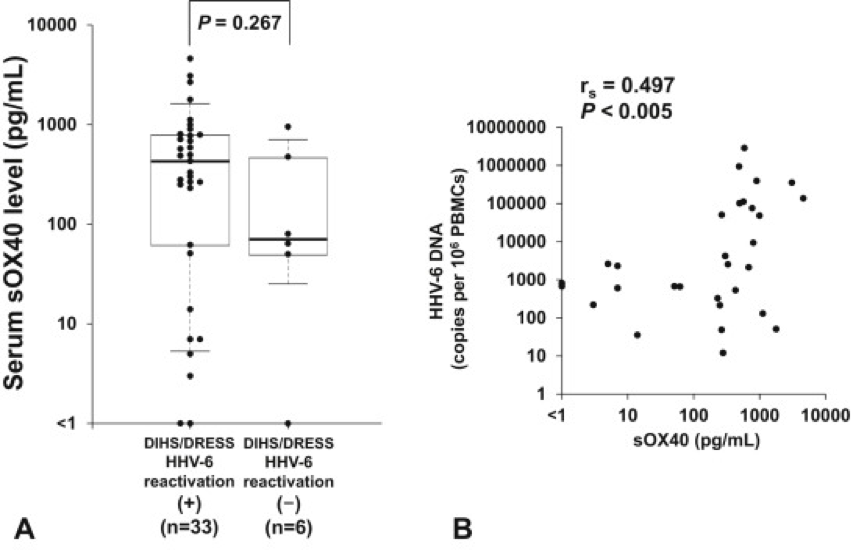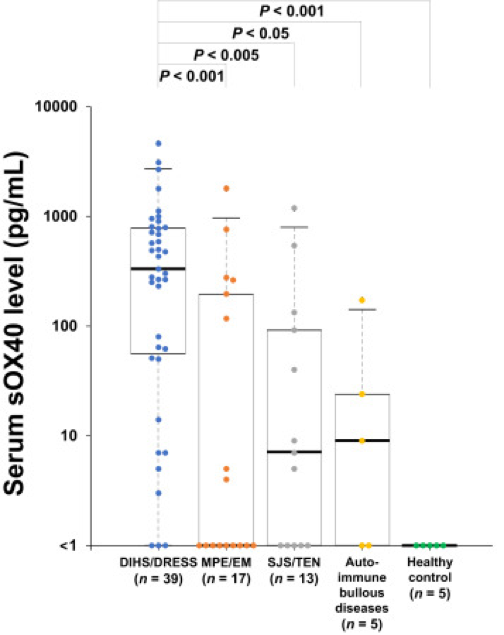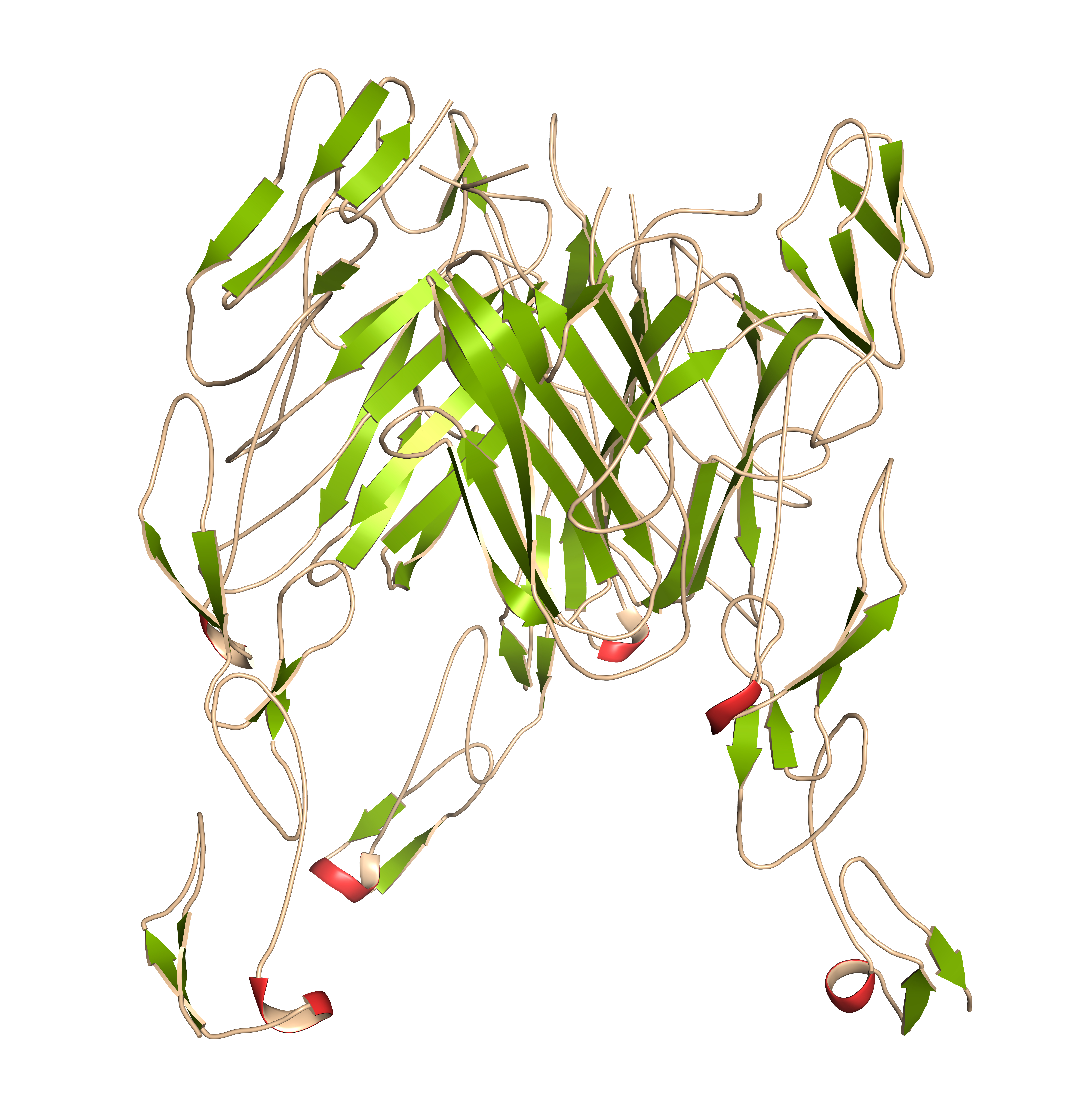OX40 levels distinguished DIHS/DRESS from other inflammatory dermatologic conditions, and were associated with HHV-6 reactivation
HHV-6 reactivation has been associated with DIHS/DRESS. OX40 (CD134) is the cellular receptor for entry of HHV-6B into CD4+ T-cells. A Japanese team led by Hideo Asada of Nara Medical Unveristy investigated the possible role of OX40 in causing HHV-6 reactivation in DIHS/DRESS, and whether OX40 might serve as a biomarker for DIHS/DRESS, distinguishing it from other inflammatory skin conditions. Although T cells are normally nonpermissive for HHV-6 infection, they become highly susceptible to HHV-6 infection when OX40 is expressed.
The group measured serum OX40 levels (sOX40) of 39 DIHS/DRESS patients, 17 maculopapular exanthema/erythema multiforme (MPE/EM), 13 Stevens-Johnson syndrome/toxic epidermal necrolysis (SJS/TEN), 5 autoimmune bullous diseases and 5 healthy controls.
Soluble OX 40 (sOX40) levels were significantly positively correlated with disease severity during the acute phase of DIHS/DRESS, and were also significantly correlated with levels of several chemokines (IL-5, IL-10, TARC) and CRP.
Most patients (33/39) with DIHS/DRESS had evidence of HHV6 reactivation, defined by a viral load by real-time PCR that was above an unspecified threshold level. Patients with reactivated HHV-6 had higher sOX40 levels than HHV-6 negative patients, although the difference was not significant (P=0.267). However, HHV-6 DNA loads were significantly correlated with sOX40 levels (P<0.005) (Figure 1B).

Figure 1: A. sOX40 levels in DIHS/DRESS patients with and without HHV-6 reactivation. B. Correlation of HHV-6 DNA load with sOX40 levels in DIHS/DRESS patients.
Measurement of sOX40 levels in DIHS/DRESS patients may:
(1) serve as a biomarker to distinguish DIHS/DRESS from other inflammatory skin conditions such as SJS/TEN, MPE/EM, and auto-immune bullous diseases, and elevated sOX40 levels are not seen in healthy controls, as shown in Figure 2, below and
(2) predict the degree of HHV-6 reactivation.

Figure 2: Comparison of sOX40 levels between disease groups.
The authors previously showed that OX40 and OX40L are upregulated in CD4+ T cells and PBMCs of patients with DIHS/DRESS, and suggest that OX40-OX40L interaction may be involved in activating CD4+ T cells and initiating DIHS/DRESS. They note that DIHS/DRESS is associated with TH2 polarizing conditions and that OX40-OX40L interaction enhances TH2 differentiation.
Read the full article: Mitsui 2021

